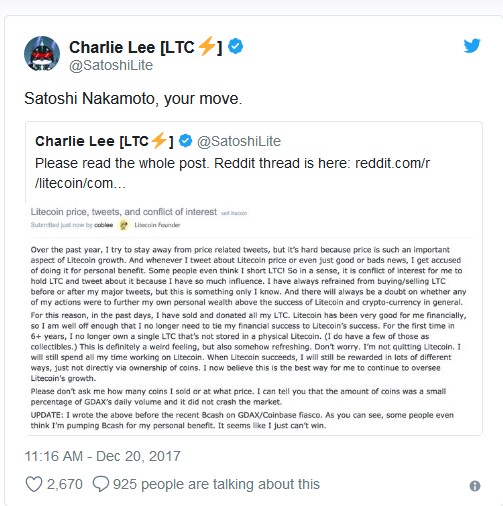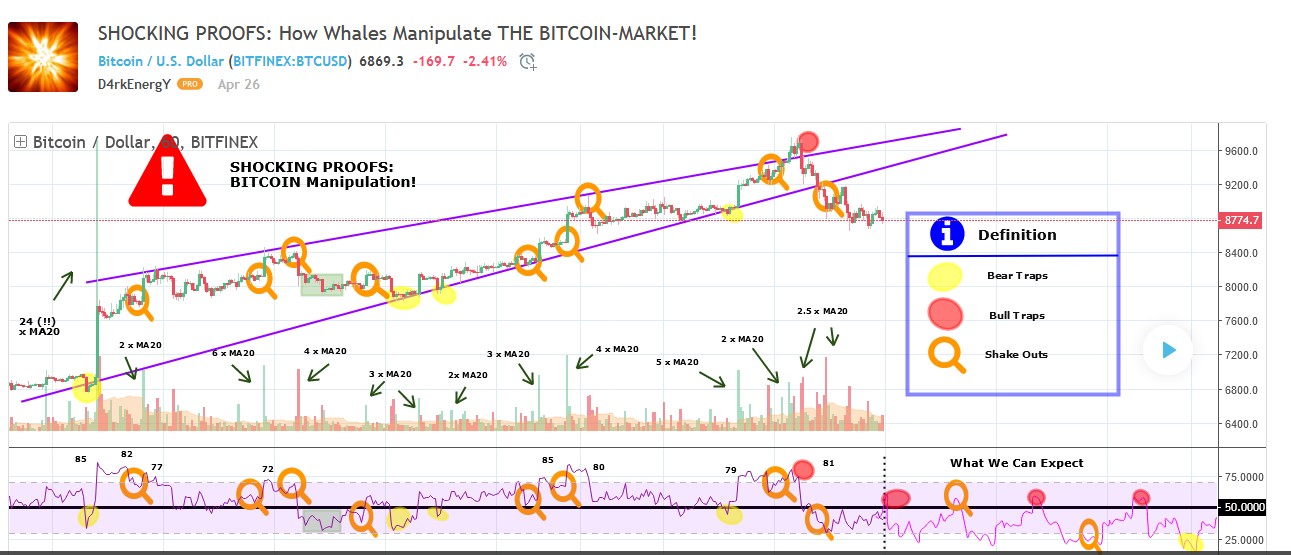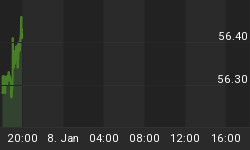Litecoin’s founder says he’s holding strong with his decision to stay away from the cryptocurrency he created.
At the end of last year, former Google employee and litecoin creator Charlie Lee sold all the litecoin he had accumulated since he founded the Litecoin Network in 2011. His reasons seemed pretty altruistic, saying that owning litecoin created a conflict of interest and pointed at the criticism he received for his tweets, which were perceived in some circles as pump and dump schemes.
"As for the future, I think eventually I would have to step away," he said in an interview streamed over Youtube. "For a currency to really be a worldwide, decentralized currency, you can't have a leader trying to control things. To make it more decentralized eventually I'll step away.’’
He even invited fabled bitcoin creator Satoshi Nakomoto to follow his lead:

(Click to enlarge)
In the Youtube interview, Lee said he regretted his move to sell just when the digital currency hit an all-time high of $350.
But now he says he has is not planning to buy any litecoin despite the fact that its price has now plunged to just $59.38. He, however, has pledged to continue working and supporting the coin he created and encourages investors to buy on the way down to dollar-cost average their buy in.
The Crypto Whales
Lee’s litecoin dump raised plenty of eyebrows due to the curious timing. His reason for selling might have been genuine, but ultimately it was self-serving.
Nevertheless, he helps to highlight the role played by large crypto investors (aka, the whales). Lee says that hostile investors openly claimed that he would one day dump a large amount of litecoin in the market at an opportune time and crash it. Related: Iran’s Currency Crisis Is About To Get Much Worse
Lee sold his litecoin loot on December 20th, three days after bitcoin hit an all-time high and started crashing. Was that a coincidence? Litecoin’s own peak and crash came a few days later. So, were whales like Lee responsible for the December-January crash? Quite possibly.
When it comes to crypto whales, there are two schools of thought: they mostly HODL or they actively manipulate the market.
This piece by the Bitcoinist argues that there’s little evidence that bitcoin whales manipulate the market and they simply HODL. The research by BambouClub uses a metric known as ‘Bitcoin days destroyed’ BDD to judge investor sentiment. The verdict: BDD is not affected by bitcoin price, suggesting most investors, including whales, are HODLing.
Yet, other studies seem to suggest just the opposite.
Another study by CryptoPlayHouse offers pretty comprehensive proof that there’s plenty of manipulation going on in the market. The trader classifies the scam setups as bear traps, bull traps and shakeouts:

(Click to enlarge)
Source: TradingView
Blockchain research company Chainalysis estimated that in April, there were 1,600 bitcoin wallets holding at least 1,000 bitcoin each. About 100 wallets held 10,000-100,000 bitcoin each. The huge concentration of wealth increases market volatility and can exacerbate crashes.
And that could have been the chief reason for the spectacular crash by the crypto market.
Chainalysis estimates that long-term bitcoin holders (whales) sold off $30 billion worth of the digital currency between December 2017 and April 2018, with nearly half of the sale happening in December alone just prior to the crash. This implies that the whales might be benevolent for a time, but also have the power to cause plenty of damage.
By Alex Kimani for Safehaven.com
More Top Reads From Safehaven.com

















